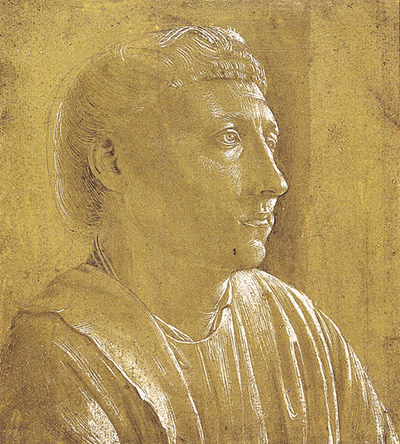Drawing was a fundamental skill within the Italian Renaissance, with artists who could not draw to a sufficiently high level being considered inferior
The biggest downside of this medium is its fragility, leading to most Renaissance drawings failing to survive to the present day. Indeed, many drawings were simply study pieces for elements of future frescoes and as such would not be considered important enough to preserve, even by the artist himself. On occasions artists might put several different drawings on the same piece of paper that had been discarded from some other function.
Fra Angelico drawings are sadly rare, particularly in comparison to the masters of the Renaissance such as Leonardo da Vinci, Michelangelo and Raphael whose careers have been researched down to the minutest of details. When considering how many of Fra Angelico's paintings have been lost or damaged over the years, it cannot be that surprising that so much of his work in this more fragile medium is now no where to be seen.
The photograph included here is of a metalpoint on prepared ochre surface drawing called Head of a Cleric and is dated at around 1448. It is now owned by the Royal Library in Windsor, presumably as part of the Royal Collection which itseld boasts a fine collection of Renaissance drawings.
Whilst there is some discussion over the attribution to this piece, with drawings rarely documented to any great length, we can be sure that it was either by Fra Angelico or one of his pupils. The most likely answer is that it was by the master as a method of teaching his students some key principles of draughtsmanship, with white touches added to heighten the impact of key areas of detail.
Paper at this time would often be used on both sides, perhaps even with several studies on the same side. It was a medium that was more expensive and harder to come by than today so artists would make the best use of it that they could. Some study sketches would also not be given much importance by the artist, so did not warrant the same treatment as a full scale fresco. As a result, they would also rarely be signed too.
Head of a Cleric was one such 'verso' with the opposite side of the paper featuring a study of a group of figures, most likely in preparation for his series of frescoes in the chapel of Pope Nicholas V. That set of drawings can be confidently attributed to his studio.
Famous other artists who used the metalpoint (many of which with white heightening) included Jan van Eyck, Rogier van der Weyden, Hans Memling, Pablo Picasso and Ivan Albright. The artist most famous for using metalpoint specifically in his work would have to be German Renaissance artist, Albrecht Durer, who also made use of many other mediums during his extensive and varied career.
An additional drawing attributed to Fra Angelico was The Prophet David Playing a Psaltery which resides at the British Museum in London. This artwork has been loosely dated circa 1430 and was completed using pen and ink with purple wash on parchment. Besides these two, there are not many other available drawings still remaining from this artist.




